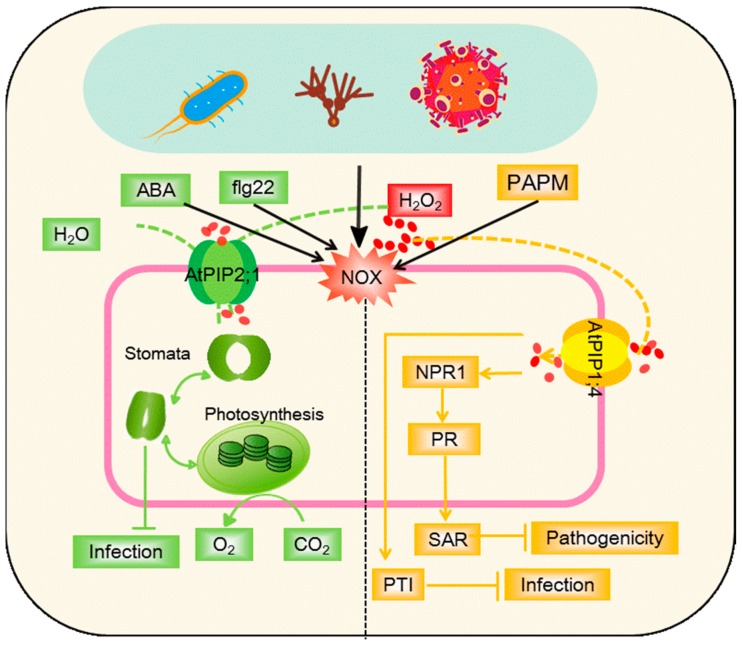Figure 3.
Model of AQPs-mediated linkage of apoplastic H2O2 to stomatal closure (green) and immunity pathways (systemic acquired resistance (SAR) and PAMP-triggered immunity (PTI)) (yellow). Apoplastic H2O2 can be induced by the pathogen or pathogen-associated molecular pattern (PAMPs, flg22), generated through the NADPH oxidase (NOX) activity and rapidly translocated into the cytoplasm under regulation by AtPIP2;1 or AtPIP1;4. Abscisic acid (ABA) and flg22 (a PAMP) activate AtPIP2;1 to facilitate transport of both water and H2O2, and promote stomatal closure to restrict bacterial invasion. Translocated H2O2 cooperates with SAR or PTI to repress the pathogenicity. ABA, abscisic acid; H2O2, hydrogen peroxide; PAMP, pathogen-associated molecular patterns; flg22, a 22-amino acid eubacterial flagellin-derived peptide; NOX, NADPH oxidase; PR, pathogenesis-related genes; NPR1, non-inducer of PR genes1; SAR, systemic acquired resistance; PTI, PAMP-triggered immunity.

